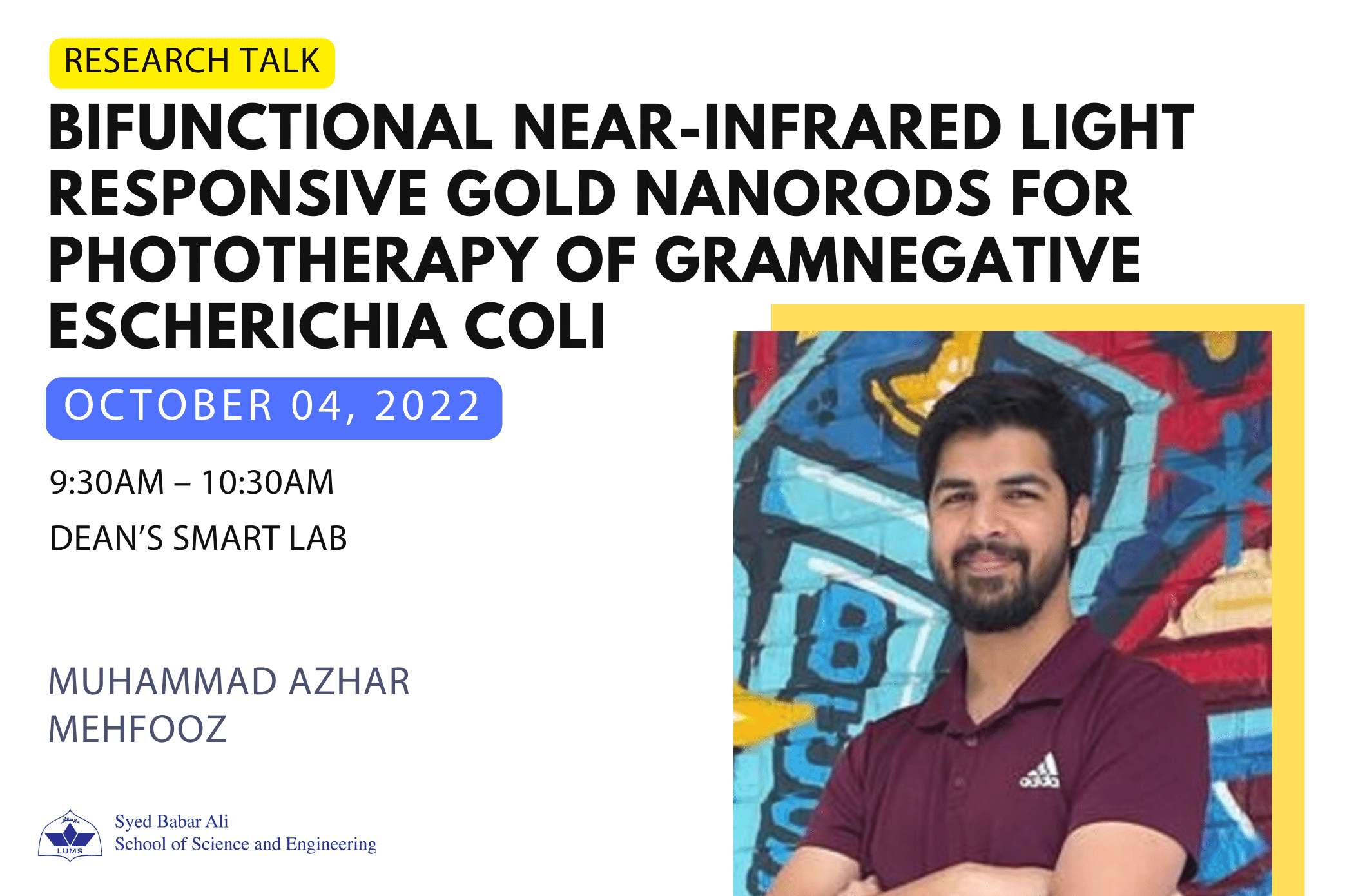
A research talk: Bifunctional Near-Infrared Light Responsive Gold Nanorods for Phototherapy of Gram-Negative Escherichia Coli
Biography
Mohammad Azhar Mehfooz (Ph.D. candidate Indiana University, Bloomington) completed his B.S. in Chemistry in 2017 under the supervision of Professor Basit Yameen. His senior year project was titled “Synthesis and functionalization of Gold nanoparticles for the early detection Lung cancer biomarkers” The advisors for this project were Professor Basit Yameen and Professor Habib-ur-Rehman. He was also trained by Professor Rahman Shah Zaib Saleem and Professor Ghayoor Abbas Chotana in Summer research projects.
He joined Indiana University Chemistry department in Fall of 2017 where he is currently a Ph.D. candidate. He has completed a major in Materials Chemistry with an Analytical Chemistry minor. He works in the research labs of Professor Jeffrey Zaleski who specializes in Enediyne Chemistry and Bergman Cyclization reactions. For his thesis, he has received training in Microbiology from our collaborators Dr. Feng Guo (Intelligent Systems Engineering, IU) and Dr. Joel Ybe (School of Public Health, IU).
At Indiana University Chemistry, he have had the opportunity to teach several undergraduate classes as an Associate Instructor, including C-103 Lab, C- 103 Discussion, C-127 Lab, C-127 Discussion, C118 Lab and P364 Discussion. During the course of graduate studies he has specialized in several analytical techniques including UV-Vis spectroscopy, Zeta Potential, FTIR, Mass Spec, Raman Spectroscopy, TEM, SEM, STM, Flowcytometry and Fluorescence microscopy.

